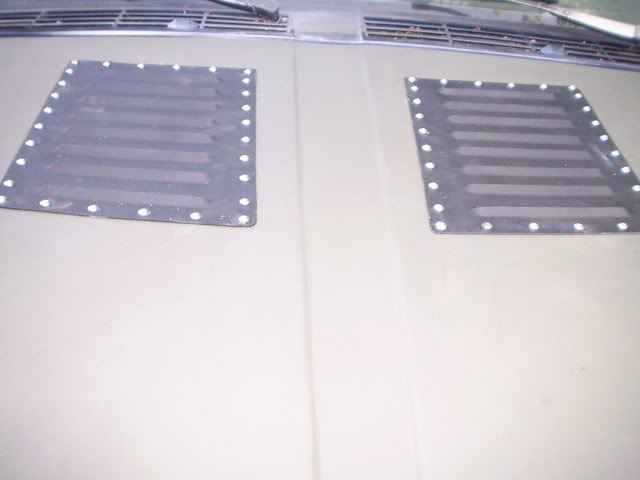By lifting the rear of the hood low vehicle speed cooling may well be enhanced, but high(er) vehicle speed cooling most likely will not. The base of the windshield becomes a high pressure area as vehicle speed increases. Opening the rear of the hood in these conditions can allow that high pressure air to enter the engine bay. While it is cooler, it tends to "dam" airflow through the engine bay - which means that it can reduce the airflow through the radiator.
Louvers in the middle of the hood will allow hot air to escape the engine bay during low speed operation. At higher speeds the middle of the hood is a low pressure area. Having the louvers in this area can actually cause the low pressure to pull more air through the engine bay. The downside to this is that the exiting hot air then is blown into the base of the windshield where most vehicles have their vent air intake.
The way to test where the high and low pressure regions are is to tape 1"-1.5" long sections of yarn in a grid onto the hood, and then go for a drive. Need only do one side as the other will nearly mirror it. The yarn will trail off in the direction of the airflow where it is high pressure, and will flap around randomly where it is low pressure.
The rivet-on louver panels are convenient, but expensive. Louvers punched around here run about $1.50 per louver. Try looking for a local street rod shop and ask them about louver punching. The black areas on this XJ's hood hide louvers punched by a mutual friend of mine and those two guys. (Yes the XJ towed that drowned 4rnnr out of there.)






